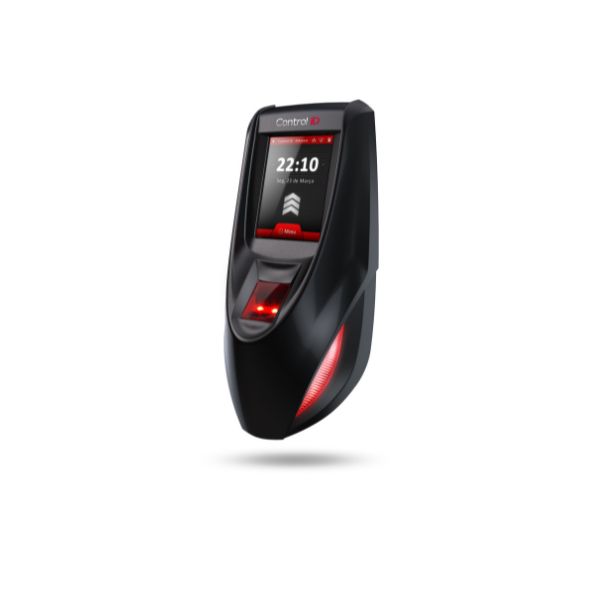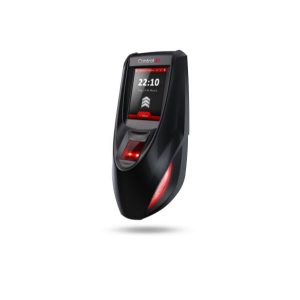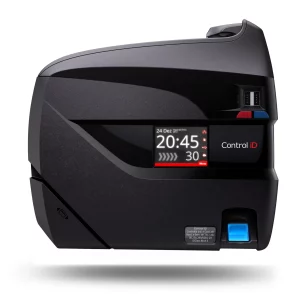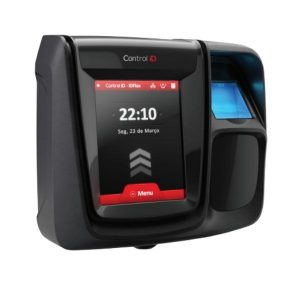ControliD’s iDAccess access controller in a fine and modernized design not only makes it possible to control the entry and exits of individuals at restricted areas, but perform these complex functions in a simple and secure way. iDAccess is offering a solution that is powerful enough to hold 200,000 records and 100,000 unique fingerprints (with iDSecure Enterprise). Besides, iDAccess ensures controlled access to groups of individuals and for schedules.
iDAccess Access Controller is simple and user-friendly and can grant authorizations based on passwords, magnetic cards, barcodes, and biometrics. It comes with an embedded software that supports backup synchronization on the cloud, facilitating seamless functioning.
Stebilex and Our System Integration & Reseller Partners Ship to:
UAEOmanSaudi ArabiaKuwaitState of Qatar
IraqJordanBahrain *
*If your country is not listed here, please contact us
Product Specification
| Access Control | |
| Door control | 2 individual entrances for the pushbutton and door sensor |
| Number of users | Capacity for more than 200,000 users |
| Quantity of Fingerprints | Capacity for more than 2,000 fingerprints for the stand alone mode and more than 100,000 for the online mode |
| Access rules | Access rules according to schedules and departments |
| Access Records | Capacity for more than 200,000 records |
| Alarm center | |
| Alarm Inputs | 5 independent alarm zones with a configurable trigger and polarity times |
| Alarm outputs | Transistor output with maximum capacity for 12VDC @ 10mA |
| Vandalism Detection | Configurable support equipment removal alarm |
| Communication | |
| Ethernet | 1 native 10/100Mbps Ethernet port |
| USB | 1 USB 2.0 Host Port |
| RS-485 | 1 native RS-485 port with a 120Ω termination (optional) |
| GPRS | GPRS connection module (optional) |
| Wi-Fi | Wi-Fi connection module (optional) |
| Identification Technology | |
| Biometric Reader | 500 DPI Optical Fingerprint Reader |
| Proximity Cards | MIFARE™ or 125kHz technologies (including ASK, FSK and PSK) |
| Password | User identification using number password |
| User Interface | |
| LCD Touchscreen | 2.6″ 320×240 Color TFT LCD Display with a Resistive Touchscreen |
| Integrated Web Server | Complete management software for access control via browser Embedded Access Management Software |
| General Features | |
| Dimensions | 55mm x 170mm x 70mm (W x H x D) |
| Equipment weight | 250g |
| Packaged weight | 400g |
| Power | External 12V source (not included) |
| Consumption | 2.4W (200mA) nominal |
Frequently Asked Questions
How secure is the biometric fingerprint recognition system, and what measures are in place to prevent spoofing or unauthorized access?
The biometric fingerprint recognition system is designed with robust security measures to prevent spoofing or unauthorized access. It typically employs advanced algorithms to analyze unique fingerprint characteristics, making it highly resistant to spoofing attempts. Additionally, features such as liveness detection or multi-factor authentication may be integrated to enhance security further.
Can the access control system integrate with existing security infrastructure, such as CCTV cameras or alarm systems?
Yes, the access control system can integrate with existing security infrastructure such as CCTV cameras or alarm systems. This integration allows for a more comprehensive security ecosystem where events from different systems can be correlated for improved situational awareness and response.
What level of support is provided for managing and configuring access rules and user permissions, particularly in large-scale deployments?
The system provides comprehensive support for managing and configuring access rules and user permissions, even in large-scale deployments. This includes features such as centralized management interfaces, role-based access control, and scalability to accommodate growing user bases and complex organizational structures.
Are there any specific compliance standards that the access control system meets, such as GDPR or industry-specific regulations?
The access control system may comply with various compliance standards such as GDPR (General Data Protection Regulation) or industry-specific regulations like HIPAA (Health Insurance Portability and Accountability Act) in healthcare or PCI DSS (Payment Card Industry Data Security Standard) in finance. Compliance features may include data encryption, access controls, audit trails, and privacy-enhancing measures.
How does the system handle power outages or network failures to ensure continuous operation and data integrity?
The system typically incorporates backup power options such as battery backups or uninterruptible power supplies (UPS) to ensure continuous operation during power outages. Network resilience features such as local caching of access rules and offline authentication may also be implemented to mitigate the impact of network failures.
Can the access control system be easily expanded or upgraded as our organization grows or our security needs evolve?
Yes, the access control system is designed to be easily expanded or upgraded as the organization grows or security needs evolve. This scalability may include support for adding additional access points, users, or features through modular hardware and software components.
Are there any mobile access options available, such as using smartphones for entry authorization or remote management?
Yes, the system may offer mobile access options such as using smartphones for entry authorization or remote management. This could involve mobile apps with secure authentication methods such as biometrics or two-factor authentication.
How does the system handle emergency situations or lockdown procedures, such as granting temporary access to specific areas during emergencies?
The system can handle emergency situations or lockdown procedures by allowing administrators to grant temporary access to specific areas or override access rules as needed. This may include features such as emergency lockdown buttons, predefined emergency access levels, or integration with emergency notification systems.
Can the access control system generate detailed reports or analytics on user activity, access attempts, or system health for auditing and analysis purposes?
The access control system can generate detailed reports or analytics on user activity, access attempts, or system health for auditing and analysis purposes. This includes features such as access logs, event notifications, and customizable reporting dashboards.





